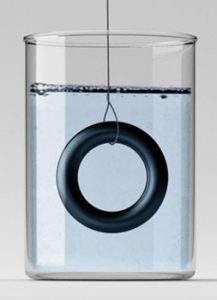Article re-posted with permission from Parker Hannifin Sealing & Shielding Team.
Original content can be found on Parker’s Website and was written by Fred Fisher, technical sales engineer of the Engineered Materials Group.

But now fast forward 20 years. Someone consults the drawing - how do they know the criteria you used to select the seal specified?
Just last week I asked my customer, who was having seal failure, about the issues on their engine sensor: “Was the original seal specified to be compatible with biodiesel?” The engineer consulted their drawing, but besides the generic circle, it lacked any background on what material compatibility was considered when the seal material was selected. The ASTM description on the drawing did not include a reference to or indicate compatibility with biodiesel.
Be specific with materials
Over time, the operating parameters of a system or product can change, so it is important to know what parameters were used for the original seal selection. The goal of the drawing is to assure that the engineers and procurement team understand what performance is required from the seal and why the specific elastomer was chosen.
So how do you make your drawing more valuable to your company?
- Define and list on your drawing all the operating conditions you anticipate the seal will see, such as temperature, pressure, and any other application specific operating conditions.
- Prepare a list of fluids as well as the concentrations of each fluid that your seal will be exposed to. Add these on your drawing. In addition, make sure you consider fluids that could come into contact with the seal indirectly through failure of other systems that are part of the product or even by cleaning the product.
- List the selected compound and manufacturer on the drawing. Clearly define what testing the compound was put through or what testing is required for approval.
- If you select a compound that was resistant to compression set, high temperatures or low temperatures, as well as explosive decompression, this should be clearly stated on the drawing.
- List clearly the industry standards the seal is required to meet, such as UL, FDA or NSF.
List fluid compatibility requirements

Once you select a compound for your specific application, it is important to test and validate that the compound chosen is compatible with the fluids you are using. Parker can typically supply small compound samples for soak testing in the fluids your seal is exposed to. If you choose to list an alternate compound on your drawing, that compound must also be tested and validated for compatibility.
Remember when developing drawings standards, assure yourself that if someone consults a drawing that is 2 years old, 5 years old or even 20 years old, they will know the intent of the original seal design.
For more information about custom sealing solutions or information about Parker seals, please contact Gallagher's engineering department.
